This year the germination rate of my carrots has been very good, and I have ended up with rows that are definitely too crowded;
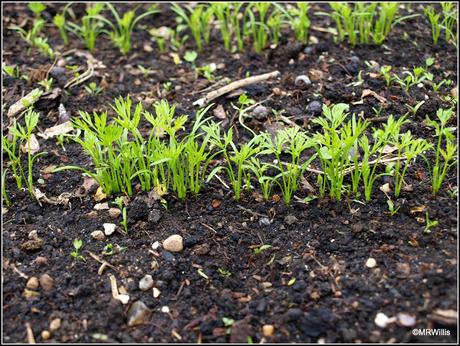
If I were to leave these as they are I would probably end up with thin, spindly carrots that had more leaf than root. They definitely need to be thinned-out to allow them room to develop properly. In my opinion, a smaller number of good carrots is better than a bigger number of poor ones!
As you probably know, my carrots are protected with a covering of Enviromesh to keep out the Carrot Root Fly:
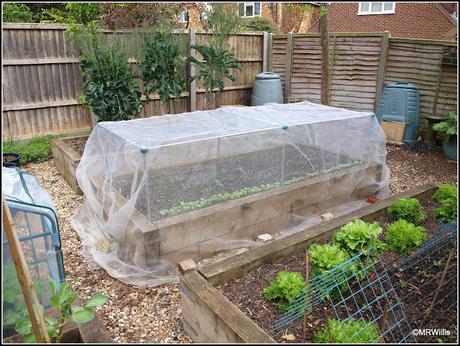
In order to do the task of thinning, the cover has to come off, but it makes sense to leave it off for the minimum length of time, because those pesky flies may be lurking, looking for their opportunity to get in! Unfortunately, thinning carrots is fiddly job that cannot be done in a hurry without the risk of causing damage to your delicate seedlings.
This is a typical clump of seedlings in my row of "Autumn King" carrots:

"Autumn King" is a maincrop carrot and its roots can get very big, so the plants need to be well spaced out. I would say not less than two inches apart, but ideally much more. My other varieties - "Chantenay Red Cored" and "Harlequin" are smaller types and can manage with less separation. For me, deciding what spacing to use is a tricky decision, because I only have a small space available and if I went for ideal spacings I would end up with not many carrots.
Thinning carrots is best done when the soil is moist, to minimise root-disturbance, so if it hasn't rained recently it is advisable to water the rows generously before you start. Also, once you have finished thinning, water the carrots again, to settle them in as firmly as possible.
Anyway, after much careful removal of superfluous seedlings, I ended up with this:
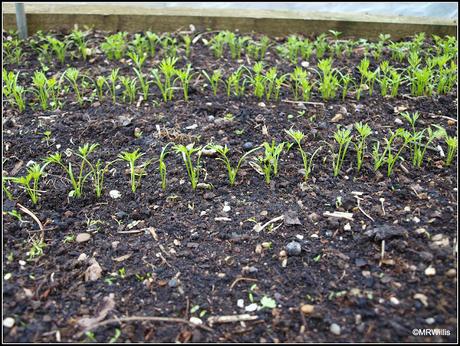
The row in the foreground has been thinned; those in the background have not
One other piece of advice: carrot thinnings can get damaged during the course of removal, which releases their strong aroma - hence attracting any Carrot Root Flies that may be in the area. Because of this you should bury the thinnings rather than just putting them on your compost heap.
So, I did all three of my rows today, and it's Mission Accomplished! Here's hoping for some nice (and big) carrots later this Summer...
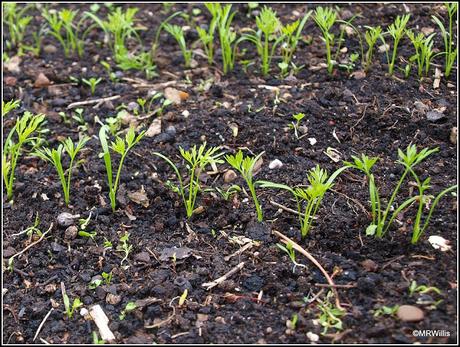
P.S. This has nothing to do with carrots, but...
I'm conscious that it is a long time since I have written anything about food or cooking. I intend to rectify this soon, but in the interim I just want to show you a couple of photos from the dinner I cooked last night. It was another meal inspired by one of my favorite Food Heroes, Yotam Ottolenghi: spicy lamb kofte with tahini sauce and toasted pinenuts, accompanied by mixed grains (bulgur, freekeh and quinoa, not pictured) and salad.

Spicy Lamb Kofte, with tahini sauce and toasted pinenuts
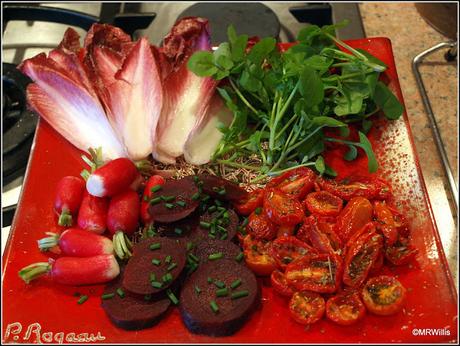
"Red salad"
